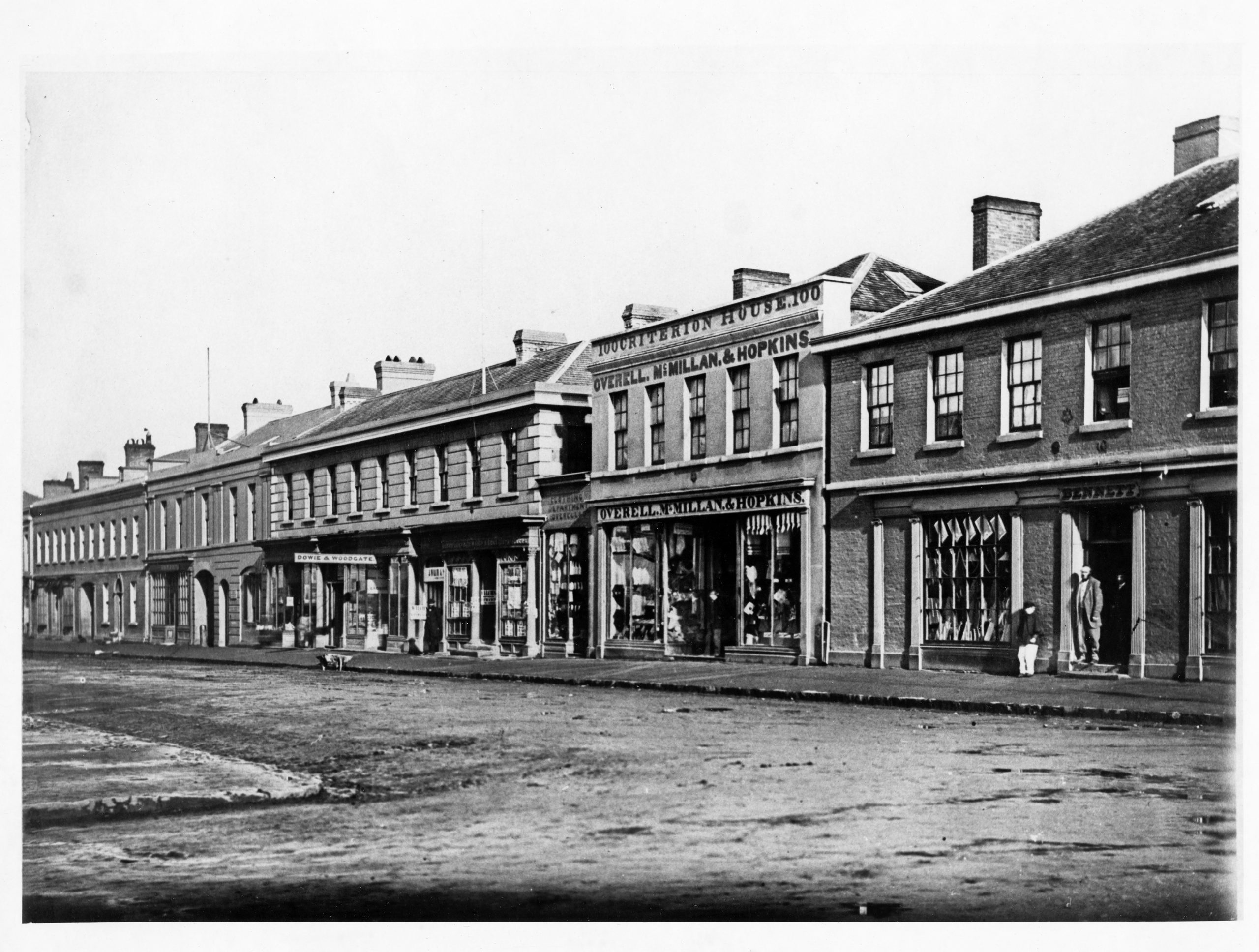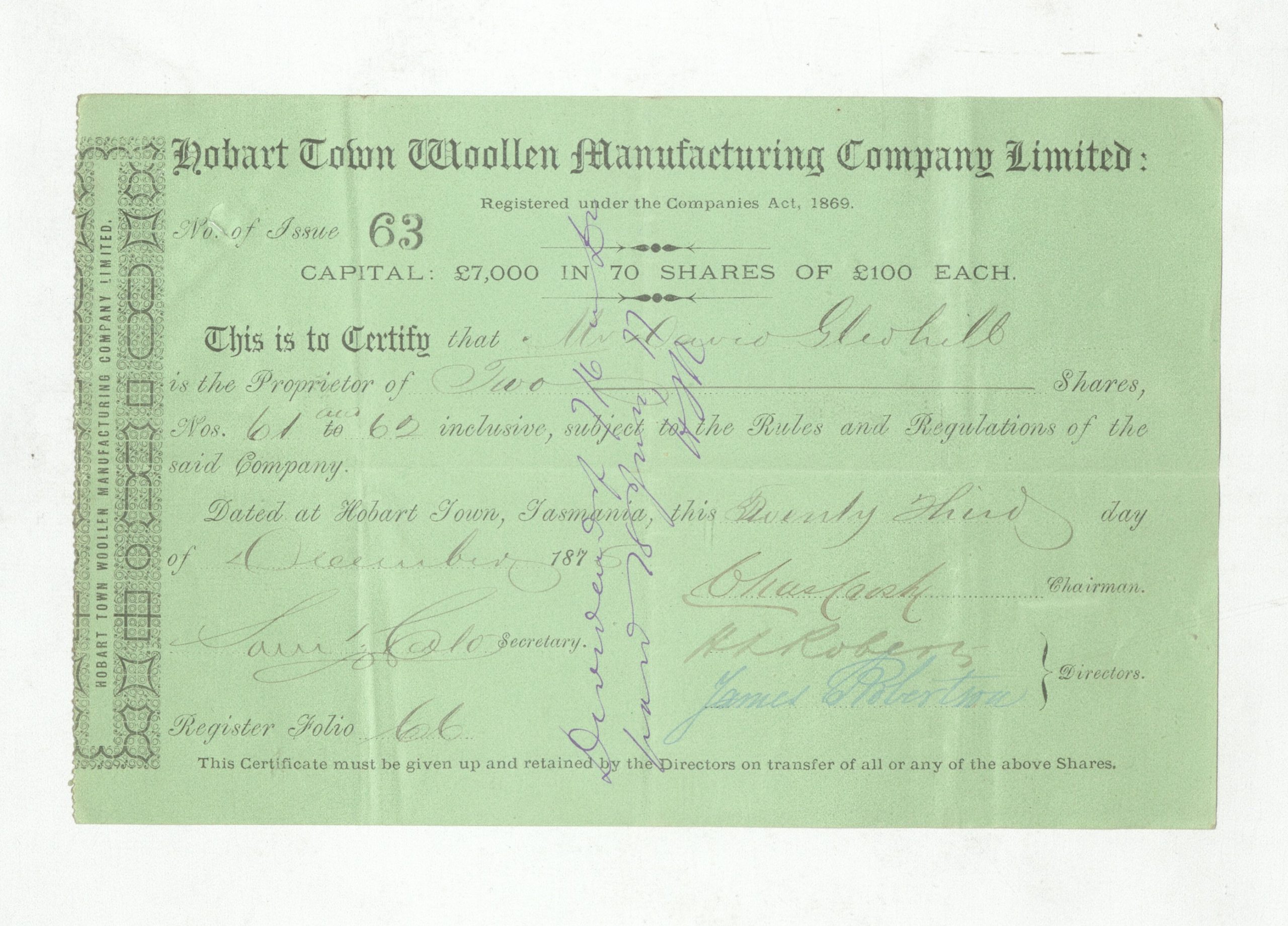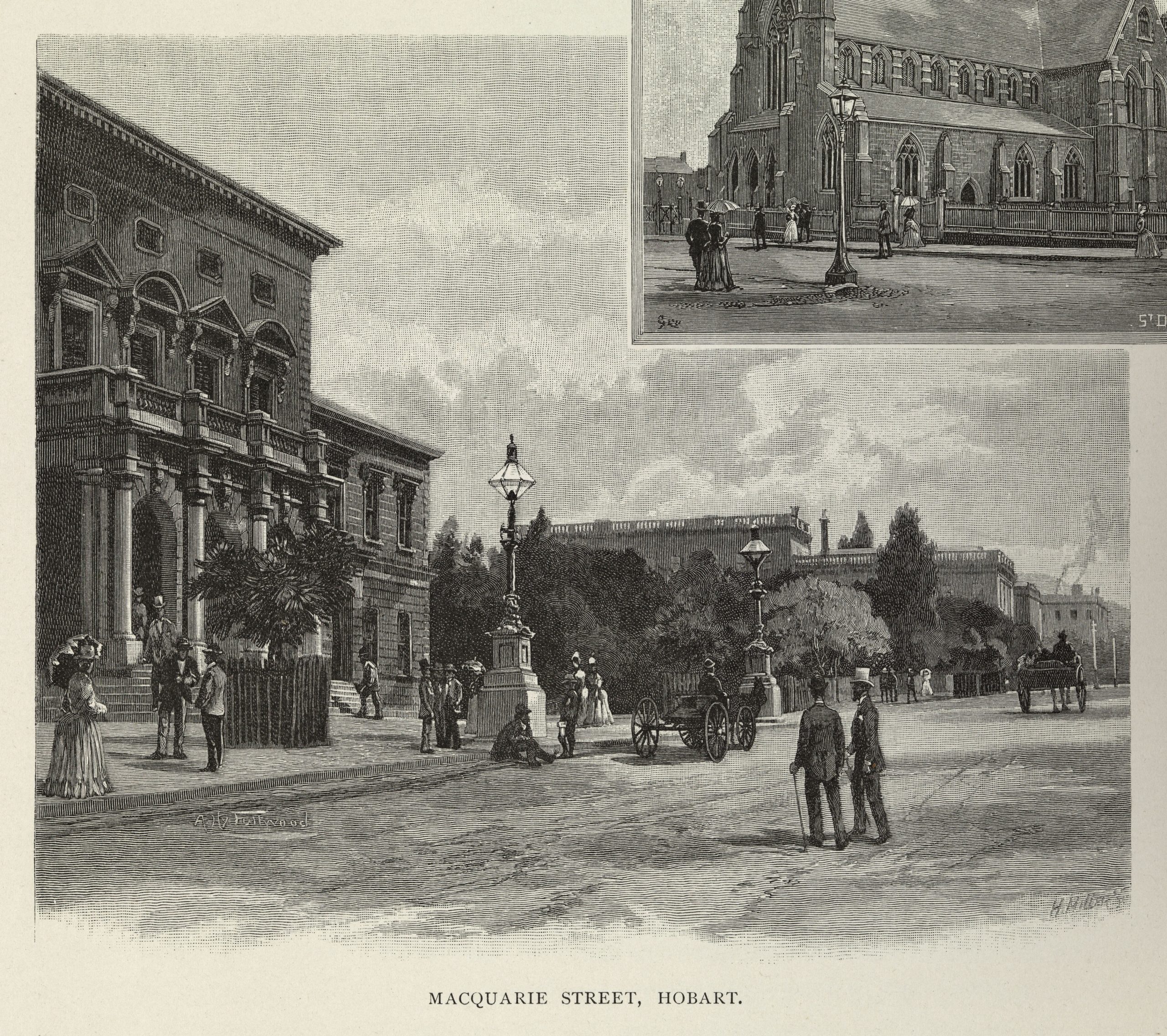The Race to a Thousand Pounds: Unravelling Tasmania’s Woollen Industry (Part Two: To the South)

This blog is one in a series published by the State Library and Archive team that explores in greater depth some of the fascinating stories that we uncovered while researching our current exhibition, Duck Trousers, Straw Bonnets, and Bluey: Stories of fabrics and clothing in Tasmania. These blogs are designed to complement the exhibition, expanding information presented on the story walls to provide more context and other perspectives. This blog is the second of three blogs that extends the research presented on the “Tale of two Woollen Mills” story wall.
If you stroll along the Hobart Rivulet towards the foot of Mount Wellington, you might be unaware of the woollen factory that once stood proudly on the banks almost 150 years ago. In its day, the settlers of Hobart Town took great pride in this venture and awarded its success to a local man named Joseph James Overell.
Before the Hobart Town Woollen Company, Joseph James Overell was well established as a draper. By April 1860, Overell entered a partnership with fellow draper James Coutts McMillan. Together with their third business partner Emanuel Hopkins, they expanded their business across the state with stores in Hobart, Launceston, Deloraine, and Westbury.

Seven years after entering their partnership, tragedy struck. In 1867, James McMillan drowned at sea and Hopkins and Overell were forced to close all northern locations trading under the ‘Overall, McMillan and Hopkins’ name. Three years later their partnership and tradename ceased to exist.

We do not know if it was the loss of his dear friend McMillan or the looming incentive of £1000 (for further discussion see Part One) that enticed Overell into the woollen trade. However, by 1873, Overell had set his sights on establishing the Hobart Woollen Company, sailing to England in search of knowledge and machinery. It was here where Overell made acquaintance with David Gledhill. After lengthy negotiations, terms were set, and a business deal was struck. In exchange for shares in the company, Mr Gledhill agreed to move to Hobart Town, bringing his machinery and experience to manage the new factory.

With clear direction, Overell returned to Hobart to begin the necessary preparations to open this factory. In 1873 five acres of land at the foot of Mount Wellington was secured for this new enterprise. With Mr Gledhill’s equipment due to arrive any day onboard the Alchemist, on the 18th of May 1874, the Hobart Woollen Manufactory opened their doors for business. The local community praised Overell for his success,
“To this progress we are indebted to the energy of our spirited fellow-citizen, Mr. Joseph James Overell, who first started the idea of turning our own wool into account in his own Island home, and by his individual energy floated a company and an institution, which we must all heartily wish every success.”
‘Our Resources’. The Mercury, 18th May 1874, p.3.
In the two weeks following their opening, they had spun 2000lb of wool with only 6 employees, and by late May business was in full swing with a total of 30 shareholders and a capitol of £7000 across 70 shares, including David Gledhill’s (see image below), which are housed within the Tasmanian Archives.

Production moved at a staggering pace, much to the delight of the local press and those involved. Inspired by this progress in July, Joseph James Overell approached the Colonial Treasurer asking that the bonus be granted to the Hobart Town Woollen Factory based on the estimates of their present stock. Although unsuccessful in the endeavour, the treasurer shared his interpretation of the act and agreed that it would not be necessary to make the full range of items listed. With this guidance the Hobart Woollen Manufactory focused solely on producing blankets and flannel. They would call their first public auction on the 23rd of October in Town Hall. This event drew a crowd estimated around 200 to 300 people.

Unfortunately, despite the impressive turn out, the auction proved to be unpredictable. By the final fall of the hammer less than half of the product was sold. With spectators estimating the product sold amounting to be more than £1,100, with a potential retail value of that again once the remaining stock had been sold on.
To be continued….
Continues in part 3: The Race to a Thousand Pounds: Unravelling Tasmania’s Woollen Industry (Part Three: Success or Misfortune?)
References
Tasmanian Archives
- Tasmanian Archives, Launceston Manuscript Collection: Photograph – Early view of Georgian shops in Brisbane Street Launceston. Includes Overell, McMillan & Hopkins, Criterion House, Dowie & Woodgate & Bennett. LPIC147/6/325
- Tasmanian Archives: Descriptive Lists of Immigrants arriving in Melbourne and Proceeding to Tasmania (1867-84), CB7/23/1/1 Page 85.
- State Library of Tasmania: Miller, H. Macquarie Street, Hobart. Print, 1886.
- Tasmanian Archives: Script, list of shareholders, Hobart Town Woollen Manufacturing Co Ltd (1874-1878), NS823/1/21
Newspaper Articles
- ‘Absolutely Selling Off!’ Launceston Examiner, 9th July 1867,Pg. 6.
- ‘Dissolution of Partnership’. Launceston Examiner, 27th Sep 1870, Pg. 6.
- ‘Law Intelligence’. The Tasmanian, 4th Feb 1871,Pg. 6.
- ‘The recent attention’. The Mercury, 16th Jun 1873, Pg.2.
- ‘To Contractors.’ The Mercury, 5th Aug 1873, Pg. 1.
- ‘Our Resources’. The Mercury, 18th May 1874, Pg. 3.
- ‘Hobart Town Woollen Factory’. Weekly Examiner, 30th May 1874, Pg. 9.
- ‘Bonus for Woollen Manufactures’ The Mercury, 18th July 1874, Pg.2
- ‘First sale of Hobart Town woollens’. The Tasmanian Tribune, 24th Oct 1874, Pg. 3.
- ‘Sale of the woollen manufactory’s goods’. The Mercury, 2nd Nov 1874, Pg. 3.

